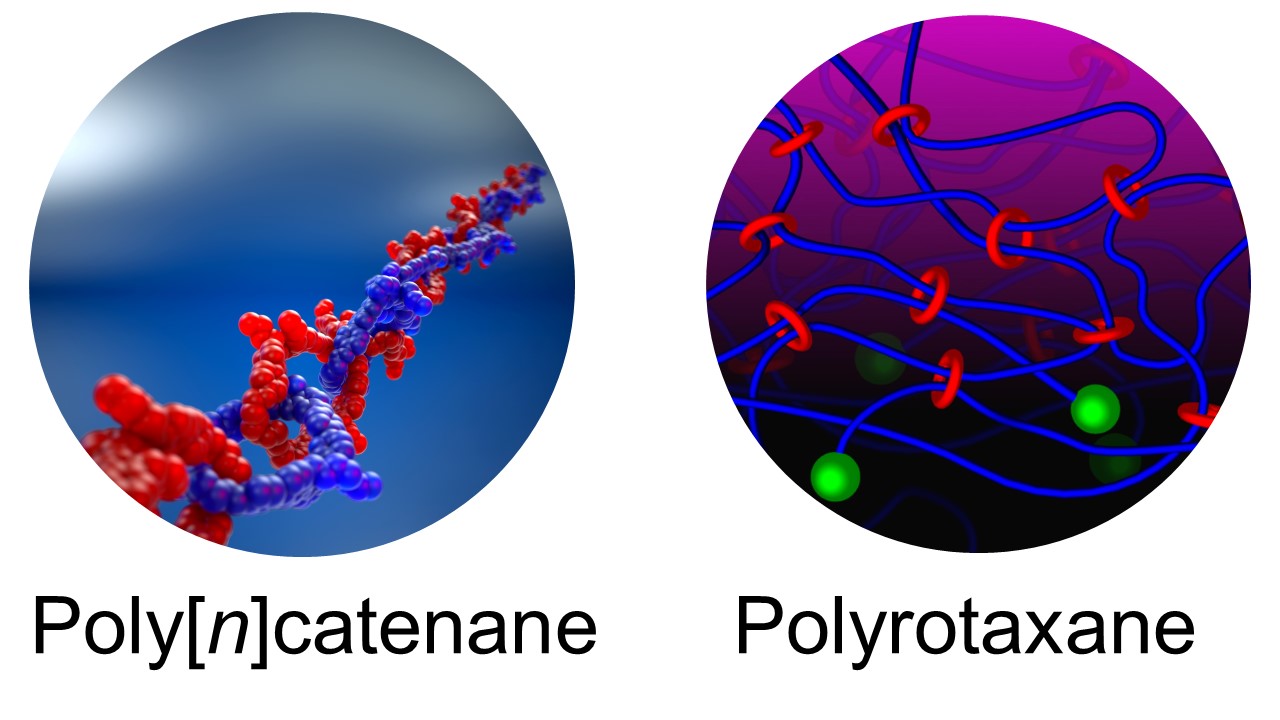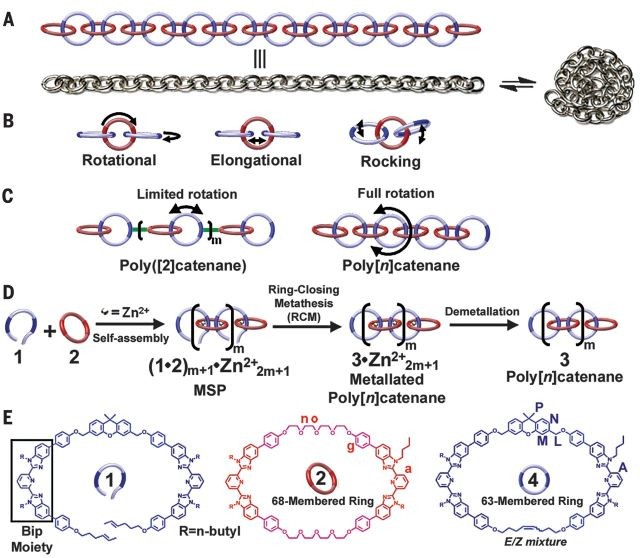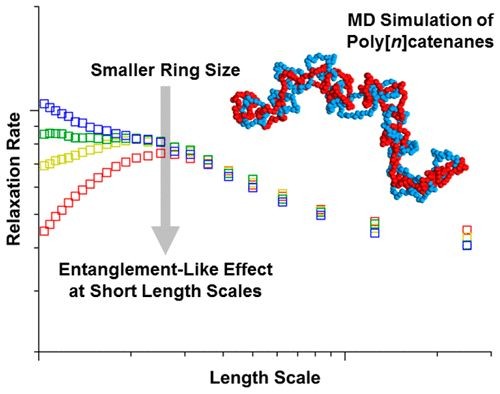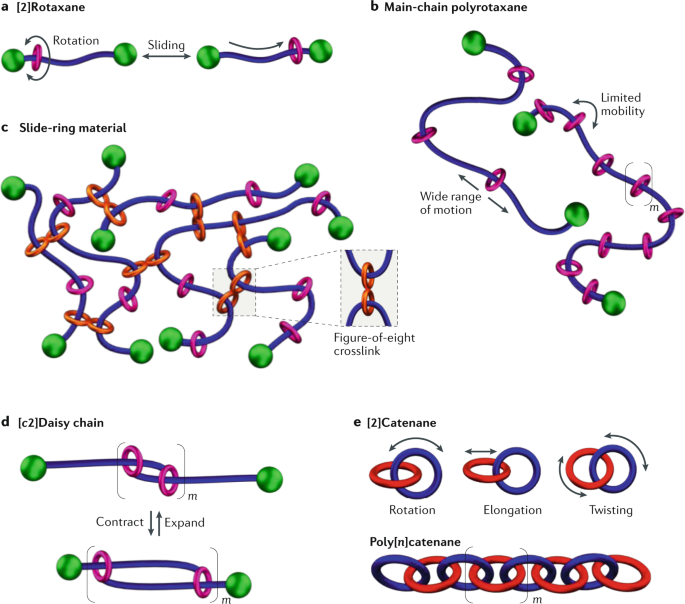
In the Rowan group, we are interested in creating new polymer architectures and applying them as advanced materials. Some of the most exciting new materials being studied today use mechanically interlocking polymers to access extraordinary properties such as self-healing, impact resistance, exceptional toughness, high extensibility and recoverability, to name a few. These unique polymers contain two or more components that are not covalently bound to each other, rather they cannot be separated without breaking a covalent bond. For instance, polyrotaxanes have a “rings-on-a-string” structure with bulky stopper groups to prevent dethreading, and polycatenanes are composed of interlocking ring molecules. Through the synergy of organic chemistry, materials science, and polymer physics, the Rowan group synthesizes and studies these new mechanically interlocked polymers with the aim of designing next-generation materials.



